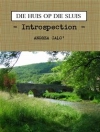New insights into the changing human attitudes towards wild nature through the depiction of wolves in human culture and heritage.
Few animals arouse such strong opinion as the wolf. It occupies a contested, ambiguous, yet central role in human culture and heritage. It appears as both an inspirational emblem of the wild and an embodiment of evil. Offering a mirror to different human attitudes, beliefs, and values, the wolf is, arguably, the species that plays the greatest role in...
New insights into the changing human attitudes towards wild nature through the depiction of wolves in human culture and heritage.
Few animals arouse such strong opinion as the wolf. It occupies a contested, ambiguous, yet central role in human culture and heritage. It appears as both an inspirational emblem of the wild and an embodiment of evil. Offering a mirror to different human attitudes, beliefs, and values, the wolf is, arguably, the species that plays the greatest role in shaping our views on what nature is or should be.
North America and, more recently, Europe have witnessed a remarkable return of the grey wolf (Canis lupus, and its close relative the Eurasian wolf, Canis lupus lupus) to eco-systems. The essays collected here explore aspects of this recovery, and consider the history, literature and myth surrounding this iconic species. There are chapters on wolf taxonomy, including the coywolf, the red wolf, and the many faces of the dingo. We also meet the Tasmanian wolf and encounter Nazi Werewolves from Outer Space. The book explores the challenges of separating fact from fiction and superstition, and our willingness to co-exist with large carnivores in the twenty-first century. Biologists, historians, anthropologists, cultural theorists, conservationists and museologists will all find riches in the detail presented in this wolf collection.












